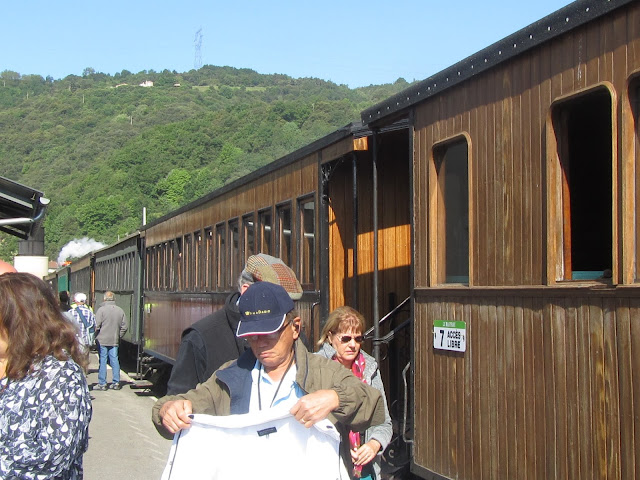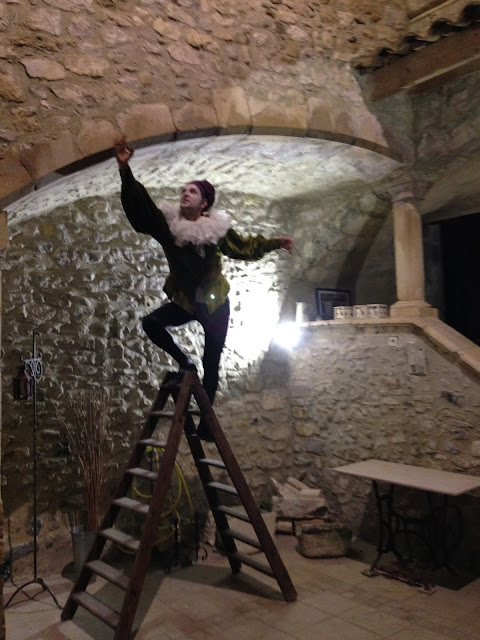You probably know all this, but I learned a bit about pollarding trees, a common practice in France, especially in the south. Plane trees are most often pollarded because they are otherwise gigantic and it is necessary to keep them in check. Once a young newly-planted tree has been established for a few years, the branches are cut off in the fall. In the spring new growth forms at the ends of the branches and is then allowed to grow for a few years before being cut back again. This technique of cutting off the top growth of the tree keeps the top of the tree young while the trunk continues to grow. One of the advantages of having juvenile top growth is that it is less susceptible to wind damage that might occur during a mistral. One of the side effects of pollarding is that the trunk often becomes hollow. In Viviers, I saw many large pollarded plane trees with large hollow spaces in the trunks.
A little extra information: pollarding is related to coppicing, which is the cutting off of a tree closer to the ground every 7 to 10 years. The truncated bottom of the coppiced tree continues to grow while the top growth remains young. Depending on the species of tree, the shoots or suckers may have various uses: wattle fencing (willows and hazel), carriage-, ship- and furniture-building (hardwoods), canes (chestnut trees) and so on. A group of coppiced trees is called a copse.
Our tour from Tournon took us by bus up to the station for the Train des Gorges steam train which climbs up the Gorge du Doux to Colombier-le-Vieux and Saint Barthélémy le Plain. The return train trip of 11 km was in an open car, not necessarily the best idea on a cold morning and with sooty smoke from the cute little engine coming back at us. Not the morning for white clothing! The views, needless to say, were stunning.
The man with the accordion is the resident musician from the boat. He played the piano in the lounge almost continuously and we soon noticed that he had no music and in fact, he does not read music. His few notes were all the words to songs. He never seemed to have much to say, but always caught your eye with a smile. One morning he helped me with a coffee machine that needed its grounds container emptied.
Isn't the engine adorable!?
At the top of the gorge, the steam engine was disconnected from the cars and then moved to a turntable that was operated by hand to get the engine oriented in the right direction for the trip back down the mountain.
Once the cars were reattached we were off on the return trip - only about a 15 minute stop at the top.
Viviers
Our night in Viviers featured an evening tour, a "ghost walk". We encountered some costumed characters from long ago who "interpreted" the scene for us. It was good fun to walk around the quiet narrow streets of the old city at night and peek into lit interiors.
We set off at 9:30 p.m.
We set off at 9:30 p.m.
Our guide in period costume
Pollarded plane trees at night






























No comments:
Post a Comment